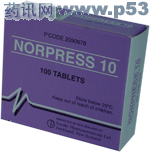|
Combination Gabapentin and Nortriptyline May Ease Neuropathic Pain
October 1, 2009 — Researchers looking for new ways to treat refractory neuropathic pain suggest that combining gabapentin with nortriptyline may be beneficial. They propose that adding an antidepressant to an anticonvulsant used for pain relief may ease difficult-to-treat neuropathic pain. Exploratory findings were published online September 30 in the Lancet.
"Given the challenges of neuropathic pain, polypharmacy is frequently used," lead investigator Ian Gilron, MD, from Queen's University in Kingston, Ontario, Canada, said during an interview. "But many combinations are not beneficial. We wanted to study this combination in a rational and evidence-based way," Dr. Gilron told Medscape Neurology.
Dr. Ian Gilron
The trial was investigator initiated and was supported by the Canadian Institutes of Health Research. Gabapentin (Neurontin, Pfizer) is a 3-alkylated analogue of γ aminobutyric acid. It was originally developed for the treatment of epilepsy but is widely used as a pain reliever.
Nortriptyline (Pamelor, Novartis) is a metabolite of amitriptyline and reportedly blocks norepinephrine, serotonin uptake, sodium channels, and N-methyl-D-aspartate glutamate receptors.
"This study is most welcome because improved treatment for patients with chronic types of pain is urgently needed," Dr. Troels Jensen and Dr. Nanna Brix Finnerup, from the Aarhus University Hospital in Denmark, said in an accompanying comment.
Neuropathic pain affects an estimated 3% of the general population, and a meta-analysis showed that less than two thirds of patients obtain sufficient pain relief (Pain 2005;118:289–305).
At the recent American Academy of Pain Medicine annual meeting, experts discussed the challenges of refractory neuropathic pain. Session moderator Perry Fine, MD, from the University of Utah School of Medicine, Salt Lake City, emphasized the limits to what can be accomplished with current therapies.
Challenge of Treating Neuropathic Pain
"Generally, available drugs lack molecular specificity and simply act as antihyperalgesics," Dr. Jensen and Dr. Finnerup add in their article. Drugs that target specific parts of somatosensory processing are now in development and could be used for early treatment before neuroplastic changes have taken place.
However, once chronic pain has set in, with all of its associated biological, psychological, and social effects, Dr. Jensen and Dr. Finnerup suggest that 1 or even 2 drugs that target a specific mechanism are unlikely to cure the patient.
In this double-blind, double-dummy, crossover trial, investigators studied 56 patients. Participants had diabetic polyneuropathy or postherpetic neuralgia and a daily pain score of at least 4 on a scale of zero to 10.
Investigators randomly assigned patients in a 1:1:1 ratio. Participants received 1 of 3 sequences of daily oral gabapentin, nortriptyline, and a combination of both. During each 6-week treatment period, investigators titrated the drugs toward the maximum tolerated dose.
The primary outcome for the trial was mean daily pain at maximum tolerated dose. Analysis was by intention to treat.
Dr. Gilron and his team found that pain with combination therapy was significantly lower than with gabapentin (?0.9; 95% confidence interval [CI], ?1.4 to ?0.3; P = .001) or nortriptyline (?0.6; 95% CI, ?1.1 to ?0.1; P = .02) alone.
Pain at Maximum Tolerated Dose
Therapy Mean Daily Pain 95% CI
Gabapentin 3.2 2.5 – 3.8
Nortriptyline 2.9 2.4 – 3.4
Combination 2.3 1.8 – 2.8
Investigators report no serious adverse events for any patients during the trial. The most common adverse effect was dry mouth, and the participants reported more weight gain in the gabapentin group.
"Combination therapy decreased pain, but it also decreased sleep interference without increasing side effects," Dr. Gilron said. He acknowledged that these promising results will need to be replicated at other centers.
"Gilron and colleagues' trial benefits from being an investigator-initiated study of 2 commonly used drugs for neuropathic pain," note Dr. Jensen and Dr. Finnerup. "This type of study is unfortunately rare because most drug studies are based on large sample sizes from many sites and financed by drug companies."
A drawback of the current study was that the investigators had to keep costs down and thus limited the number of participants. They used a crossover design in which each participant served as his or her own control.
The investigators also provide no data on the benefits of sequential vs simultaneous combination treatment. "In clinical practice, sequential treatment is most common," Dr. Jensen and Dr. Finnerup point out, "but in Gilron and colleagues' study, drugs in combination were given simultaneously."
This study was supported by the Canadian Institutes of Health Research. Lead author Dr. Ian Gilron and senior author Dr. Robyn Houlden have disclosed receiving financial support from Pfizer. Editorialist Dr. Troels Jensen has disclosed that he has received funding from Pfizer, Eli Lilly, and Grunenthal. Editorialist Dr. Nanna Brix Finnerup has disclosed receiving research support from UCB Nordic.
Lancet. Published online September 30, 2009.

加巴喷丁
【别 名】卡巴番定 , 加巴喷丁
【外文名】Gabapentin,Neurontin
【药理毒理】Gabapentin是美国Warner-Lanbert公司首先开发的抗癫痫药,于1993年首次在英国上市。加巴喷丁是一种新颖的抗癫痫药,它是γ-氨基丁酸(GABA)的衍生物,其药理作用与现有的抗癫痫药不同,最近研究表明加巴喷丁的作用是改变GABA代谢产生的。加巴喷丁在各种动物模型中均显示预防癫痫的作用,另外,在动物痉挛、镇痛和肌萎缩性测索硬化模型中也显示作用。加巴喷丁对脑组织的新颖结合点有高的亲和性,它能通过氨基酸转移体通过体内一些屏障,同其它抗惊厥药相比,加巴喷丁具有较小的行为和心血管副作用。
【药理作用】:
加巴喷丁抗惊厥作用的机制尚不明确,但动物试验提示,与其他上市的抗惊厥药物相似,加巴喷丁可抑制癫痫发作。小鼠和大鼠最大电休克试验、苯四唑癫痫发作试验以及其他动物试验(如遗传性癫痫模型等)结果提示,加巴喷丁具有抗癫痫作用,但这些癫痫模型与人体的相关性尚不清楚。
加巴喷丁在结构上与神经递质GABA相关,但不与GABA受体产生相互作用,它既不能代谢转化为GABA或GABA激动剂,也不是GABA摄取或降解的抑制剂。放射性配体结合试验发现,加巴喷丁浓度达到100μM时,对许多常见受体位点无亲和力,包括苯二氮受体、谷氨酸受体、NMDA受体、quisqualate受体、海人草酸受体、番木鳖碱-不敏感性或-敏感性的氨基乙酸受体、α1、α2或β受体、腺苷A1或A2受体、M或N受体、多巴胺D1或D2受体、H1受体、5-羟色胺S1或S2受体、阿片μ,δ或k受体、尼群地平或地尔硫标记的电压敏感钙通道位点、蛙毒素A 20-α-苯甲酸盐标记的电压敏感的钠通道位点。由于在评价药物对NMDA受体作用的几个常用试验所得出的结果是相反,故目前尚无任何关于加巴喷丁对NMDA受体作用的统一认识。
体外研究显示加巴喷丁在大鼠脑内的结合位点分布于新皮层和海马,其高亲和力的结合蛋白被证实为电压激活钙通道的辅助亚单位,相关功能尚未阐明。
【适应症】难治的不全性癫痫。有报道,抗焦虑药加巴喷丁(gabapentin)和抗病毒药伐昔洛韦(valacyclovir)联用可减少急性带状疱疹后遗神经痛的危险。
【不良反应】包括嗜睡,眩晕,行走不稳,疲劳感。这些副作用常见于用药早期。只要从小剂量开始,缓慢地增加剂量,多数人都能耐受。儿童偶尔会急躁易怒,停药以后会消失。
【用法用量】第一次睡前服300毫克。以后每天增加30毫克,用量可以高达每天3600毫克上述剂量需分三次服用。
【注意事项】对本药过敏者禁用。
【规格】胶囊:100mg/粒。300mg/片,400mg/片.
|



